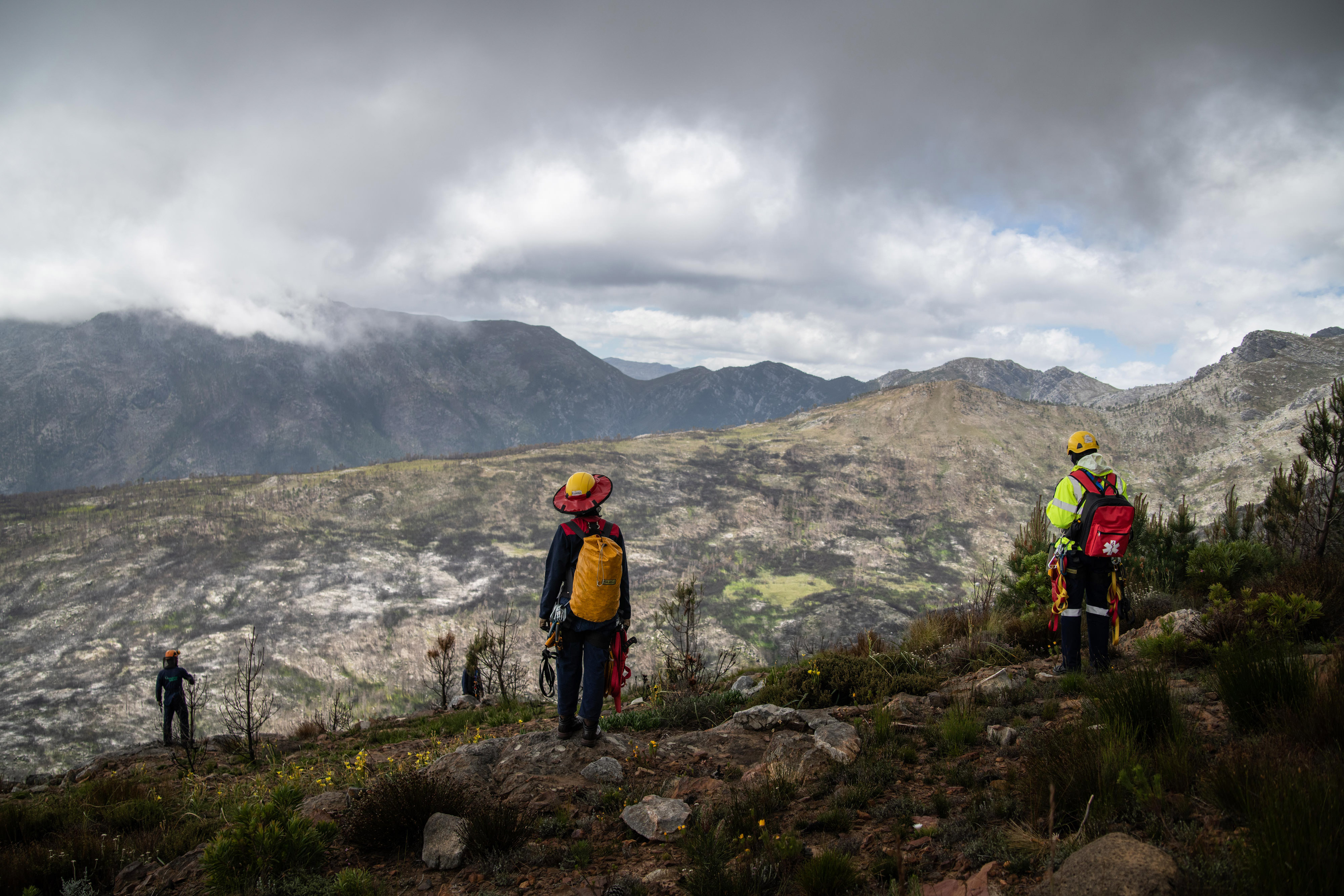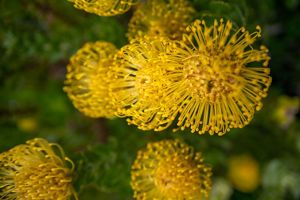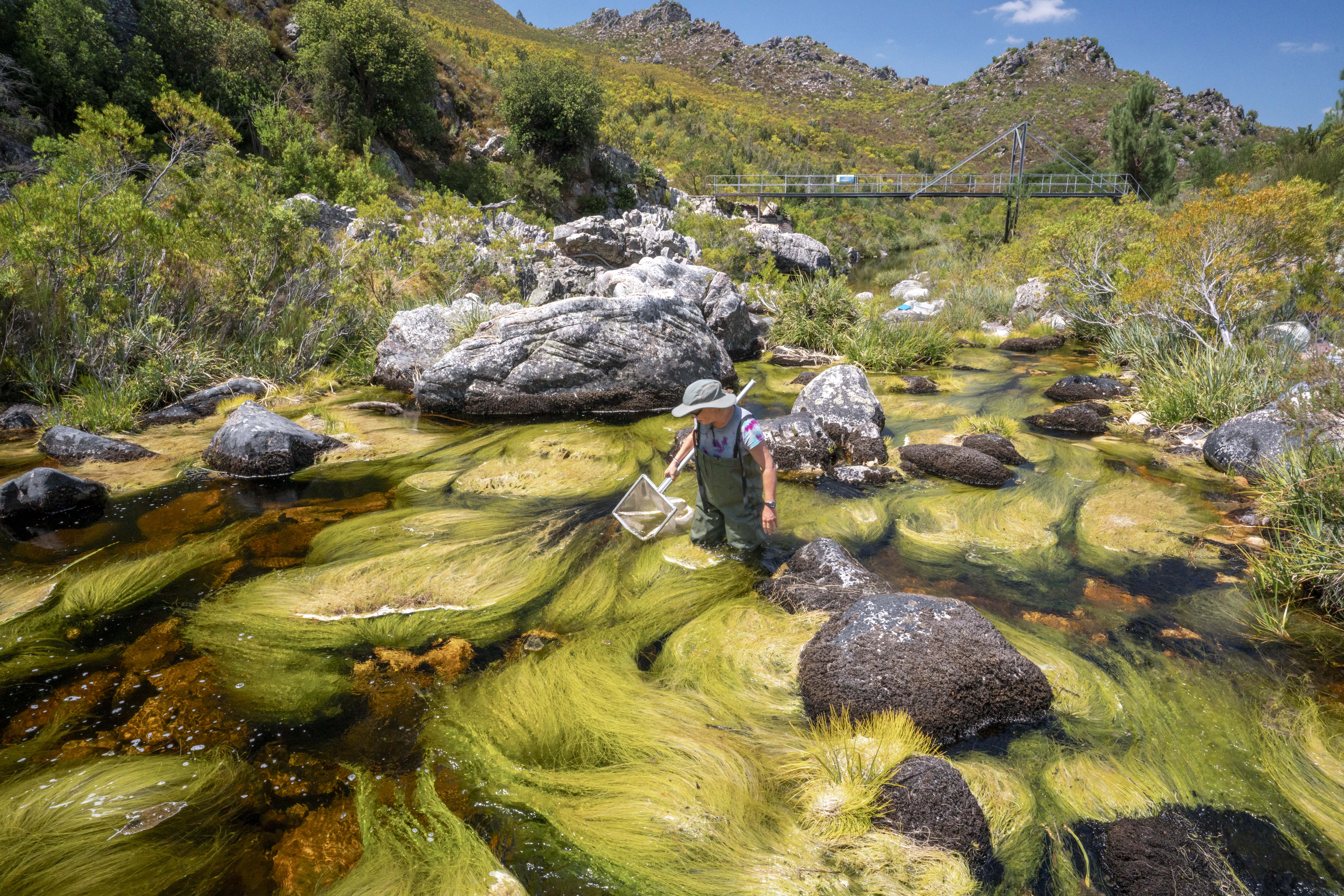Nature-Based Solutions Are Protecting Cape Town’s Water Supply
The Greater Cape Town Water Fund is returning billions of liters of water to this area of South Africa
In early 2018, the name Cape Town became synonymous with water scarcity after a three-year drought drew the city dangerously close to “Day Zero”—the day when the citizens’ taps would run dry.
While that doomsday never came—due to strict water-use restrictions and much-needed rain—this close call also served as a wake-up call about the need for new, long-term solutions.
Soon after, at the end of the 2018, TNC launched the Greater Cape Town Water Fund (GCTWF), and work began to ensure the city has the water it needs for its citizens, businesses, and the economically important agricultural sector.
Stay in the Loop.
Get local conservation stories sent right to your inbox.

What Is a Water Fund?
While the current global focus has been on “grey” infrastructure—such as desalination, recycling waste-water and tapping groundwater supplies—to combat water scarcity, “green,” nature-based solutions have the potential to produce significant water supply improvement at far lower cost.
Water Funds are public-private partnerships that connect around a common goal: using nature-based solutions to ensure sustainable watershed management. Downstream users, such as businesses, utilities, and local governments, contribute to upstream conservation initiatives aimed at improving water quality and quantity for the region.
The Nature Conservancy (TNC) has helped establish more than 40 water funds worldwide since 2001, and there are more than 15 water funds in Africa in various stages of development.

Five Years of Success
The GCTWF is celebrating five years of successful operations since its launch in November 2018.
A key component of the GCTWF is removing invasive trees—including acacia, pine and eucalyptus—from remote, hard-to-access areas. These invasive trees use huge amounts of water compared to the natural plants, reducing the amount available for people in and around Cape Town.
As of October 2023, GCTWF teams have cleared more than 46,000 hectares of invasive trees. This recovers about 15.2 billion liters of water per year (42 million liters per day) back into the water catchment and keeps the rivers flowing.
And the work has had community benefits, too: Since 2019, the GCTWF has created 722 green job opportunities, nearly half of which are held by women. About 150 of those jobs are for high-angle technicians. This challenging work in remote, mountainous terrain, is the biggest operation of its kind in South Africa. In a region grappling with severe unemployment, jobs with the GCTWF provide opportunities for the community.
One of the greatest achievements of the GCTWF is the impact it has had on individuals in the program beyond the work itself. GCTWF is supporting eight businesses with mentorship to grow their operations in the environmental sector and is providing training to individuals in various disciplines. Some courses are customized for people to be able to work in these remote and difficult terrains, such as training in wilderness rope access, wilderness first aid response, and leave no trace.
Quote: Sesethu Pute
We relied on social grants and church donations to sustain myself and my family. I am now able to support my family and live comfortably.
Securing Local Support for Big Change
The City of Cape Town supports innovative approaches for water security as seen by its inclusion of nature-based solutions, alongside engineering options, in its water strategy launched in 2019. The city further demonstrated its commitment to water security by contributing R50 million (approximately $2.6M) from July 2021 to June 2023 to clear invasive trees in the catchments of three major dams: Wemmershoek, Berg River, and Steenbras. The City’s investment in catchment restoration enabled the clearing of 11,267 hectares—7,696 initial and 3,471 hectares follow-up.
In April 2023, Executive Mayor Geordin Hill-Lewis announced another R75 million (approximately $2.6M) commitment to continue clearing the catchments of the dams operated by the city, which was approved by the City Council in June.
This buy-in from the city is a significant vote of confidence in TNC and the GCTWF. Over the next three years, the catchments of the Wemmershoek, Steenbras, and Berg River dams will be cleared and follow-up clearing will be in progress.


A Focus on Fynbos
Clearing invasives also supports the region’s unique flora and fauna. The Cape Floral Region (fynbos) holds more than 20% of Africa’s plant life, and 70% of the plants here are found nowhere else on Earth. Unmanaged invasive plants can quickly replace other native species and threaten this unique plant life. They also alter soil ecology and increase the frequency and severity of wildfires.
Improved water health is also important for animals that live in and around the region’s rivers and streams. The giant redfin, for example, is an endangered fish found in only in the cold mountain streams of the Cape Fold Mountains. Ensuring healthy water flows improves the habitat of these endangered fish and other freshwater species and reduces the threats to their survival.

What’s Next for Cape Town and Beyond
The goal of the GCTWF is to avoid water losses of up to 100 billion liters per year by 2050 by removing invasive trees from the catchments and maintain the catchments free from invasives. Progress of the hectares cleared are captured monthly in the Decision Support System (DSS), an interactive online dashboard that tracks the progress of all activities undertaken by the partners of the water fund. Today, the program involves multiple government departments, NGOs, and water user associations that are all using the DSS tool to coordinate work.
In April 2023, the GCTWF was registered as a separate legal entity, the Greater Cape Water Fund. It will transition over the next few years to a fully independent entity and will expand its scope to other key catchments in the Western Cape Province.
The GCTWF is also serving as a model for new water funds across South Africa. In April 2023, South Africa’s second water fund was launched: The Kruger 2 Canyons Catchment Investment Program (K2C CIP), a partner-led water fund, focuses on the Blyde River catchment. Here we collaborate with Kruger 2 Canyons Biosphere Reserve Company (K2C NPC) as the lead partner, supported by TNC and Conservation South Africa.
The water fund will clear invasives and improve grazing practices to address water security challenges. The K2C Biosphere Reserve represents just 1.4 percent of the country’s total land surface but is home to roughly three quarters of South’s Africa’s bird and mammal species, including iconic wildlife like elephants, rhinos, and hippos.
And another water fund is on the horizon: TNC partnered with the Nature for Water (N4W) Facility to determine the feasibility of a water fund in the uThukela watershed, which we anticipate will have a full business case in 2024. The uThukela Water Fund will tackle alien plant invasions, land degradation, sedimentation in the upper reaches of the Tugela River, augmenting the water supply for the cities of Durban and Gauteng, as well as for rural communities.
GCTWF is a collective action initiative, applying a blended public and private funding model to achieve water security for the Greater Cape Town region by restoring source water areas. The GCTWF governance includes a board and diverse stakeholder working groups.
Watch Videos About This Work



